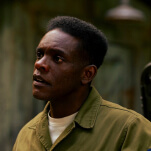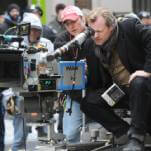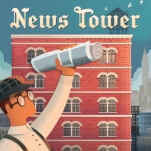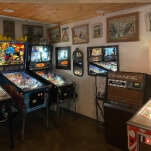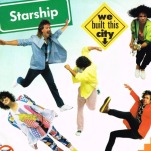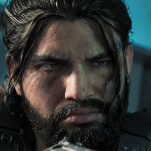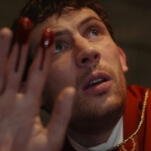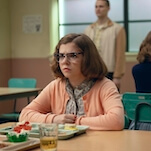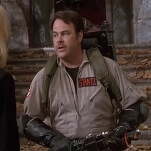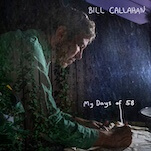There’s a weird act of confidence embedded in every game that employs the increasingly unavoidable roguelike/roguelite structure. (That is, games built on the assumption that you’re going to die and restart a lot of times while progressing through semi-randomized worlds, usually accruing some small amount of permanent progress in the process.) To wit: How do you keep a player coming back after you’ve just kicked their teeth in for the dozenth time?
This question was front of mind for me this week after a few hours spent with the brand new The Rogue Prince Of Persia, a game I like a lot more in theory than in actual play. The premise is simple: Liberally rip off the fast-moving combat of indie hit Dead Cells—which developer Evil Empire was originally created to craft DLC for—and marry it to a side-scrolling version of the parkour and wall-running so beloved in the Prince Of Persia franchise. Runs through the various ruined villages and enemy camps are varied (slightly) by new weapons and equipment, and the player steadily unlocks new levels to leave their sandy bootprints all over. Regular enemies are fairly easy to deal with, but hit like trucks; bosses are big, bombastic, and bastard-y, representing walls that have to be overcome with a combination of muscle memory and slightly better character builds. Add a thin story about a “rogue” Prince—I could go on at length about how irritating I find the game’s name, but I’ll spare you—some mechanics for getting a little stronger after every death, and you’ve got a very clear blend/imitation of two very successful franchises.
(Okay, but seriously: I know most modern game genre names are kind of dumb—looking at you, Metroidvania—but no game has ever felt further from the slow, brutal, 45-year-old ASCII art dungeon crawl of the original Rogue than this slick little package. But I digress.)
Besides lifting the play and gamefeel of Dead Cells with a transparency that’s actually a tad shocking, though, Rogue Prince Of Persia also ends up adopting that game’s greatest flaw: The way it makes an incredible first impression, which then slides a little closer to tedium every time you get murdered, and have to start all the way back at the beginning for another 45-minute sprint toward failure. And, you might rightly ask: Isn’t that what I signed up for, when I hit play on an unabashed roguelite game? To which I can only respond: As someone who’s got more than 1,000 hours invested in The Binding Of Isaac, who’s burned through Monster Train and Slay The Spire and Rogue Legacy and Children Of Morta and Undermine and Cobalt Core and Hades and just about every major roguelike to come out over the last 10 years: Not all such loops are created equal. The games that do it well typically do so through variety, more than raw play, and most especially variety in what the player can do: Games like Monster Train and its sequel pull joy from the insane number of build possibilities players get access to, while Isaac is a toybox of bizarre combinations of synergies and powers built out of just a handful of incredibly simple parts. (Only the Hades games, arguably, avoid this kind of combinatorial joy in favor of using a more narrative draw to pull the player forward—but even then, creator Supermassive is careful to drip out new weapons and powers steadily as you delve deeper into Zagreus and Melinoë’s stories.)
But because their combat is so fast, and so relentless—and because that speed and smoothness is so core to the game’s appeal—it rarely feels like Dead Cells (and, as a consequence, Rogue Prince Of Persia) can tap into this all-important sense of changing things up. Yes, you can get different weapons, with different special moves and ways to accrue critical hits. But these various armaments (and the perk-ish medallions you find alongside them) have such a small impact on the resulting gameplay that they feel partially cosmetic; it’s simply not that different to smack the game’s generic Hatchet Hun enemies with a big dented pot than it is to hit them with a giant spear; picking between different projectile weapons similarly feels mechanically underwhelming. The game looks great and flows smooth as silk—even if it occasionally feels like some of the visual flourishes serve to obscure important information about where, exactly, enemy attacks are landing. (Death, sometimes quite literally, in a game that moves this quickly.) But RPOP slams hard into the critical moment—the one when you’ve just had 40-odd minutes of play crash straight into a wall made of boss, and are now faced with the question of whether to once more into the breach it, or just chuck the whole thing. For me, that question typically comes down to “Am I likely to see or play with something I haven’t encountered before?” Despite its various unlocks and drips of story, The Rogue Prince Of Persia feels, more often than not, like a “No.”





